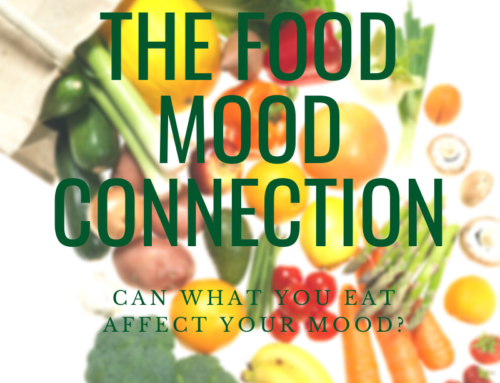Intuitive Eating Principles for Families
As a dietitian, my job is to help people feel healthy through food. Food should make us feel nourished. Nourishment may be consuming foods that are high in vitamins and minerals. And nourishment may also be consuming foods that bring us comfort.
Food should not make us feel guilt or shame. And, this shift in mindset, to consume food based on how we want to feel instead of consuming food based on how we think we should look, has largely been motivated by the gaining popularity of Intuitive Eating.
In this article I will teach you how to apply the Intuitive Eating principles for families so that you can create healthy habits around food and body image for not only yourself, but also your children.
Definitions
Let’s first lay out a few definitions: Intuitive Eating is a flexible style of eating in which you follow your body’s cues for hunger and fullness to gauge when to eat, what to eat and when to stop eating. Intuitive eating is based on 10 core principles that focus on health rather than weight.
Intuitive Eating Principles
Dietitians Evelyn Tribole and Elyse Resch cultivated the premise of Intuitive Eating and it’s 10 Principles in the 1990’s after reviewing hundreds of studies related to dieting and health.
- Reject the diet mentality
- Honor your hunger
- Make peace with food
- Challenge the food police
- Discover the satisfaction factor
- Feel your fullness
- Cope with your emotions with kindness
- Respect your body
- Movement-Feel the difference
- Honor your health-Gentle nutrition

Anti-diet is a movement that focuses on making peace with food, removing guilt and shame around food and allowing one to enjoy cravings as they come up.
While the word “diet” essentially means the food that a person or animal habitually eats, we have come to think of it as a specific set of rules around food. And these specific rules have been tripping us up for years.
Background
Dieting is a cycle. The end goal is typically to lose weight. Most people who go on a diet want to lose that weight quickly. So, they follow a prescribed diet with specific rules that tell them to restrict certain foods or amounts of food. Oftentimes the foods they are told to restrict are foods that the person truly enjoys.
Nevertheless, their need to lose weight far exceeds their need to find joy in food. So, they diet. They cut out foods that give them joy or comfort and they lose weight. Goal accomplished. However, the diet is typically so restrictive that once the person reaches their goal weight and declares a victory, they go back to eating the things they had previously cut out. And guess what? The weight comes back. So, they start another diet. And so on.
There are many different variations to the above-mentioned cycle. Dieting, for a lot of people, causes guilt when they eat something not on their diet list; shame when they binge after slipping up; hopelessness when they make themselves believe they have no self-control around food. And this has been so ingrained in our day to day lives that we normalize these feelings and think this is the only way to eat.
Well, it’s not.
Problem with Diet Culture
The individual or the dieter is not the problem. Our diet culture is the problem. We are constantly inundated with images and media messages all over our tv’s, phones, computers, billboards, of an ideal size. Thinner, smaller, fitter. We read article after article about what foods are healthy and what foods are bad; eat this, not that.
We have been programmed to believe that a thin body is the only body to strive for. But you know what? Weight is not an accurate measure of health. Healthy habits are what determines one’s health. Focusing on eating more fruits and vegetables, adding more movement throughout the day, consuming alcohol in moderation and not smoking have a more positive affect on your overall health than the number on the scale.
How Do We Change the Dialog?
We throw out the “rules” of dieting and learn to eat intuitively. This means we start paying attention to what our body is telling us it needs rather than paying attention to diet rules. We decide that we will eat food that makes us feel good both physically and mentally. We eat when we are hungry, we slow down and incorporate all our senses in our meals, we stop when we are full and we savor the entire experience.
All human beings are born with an innate ability to eat intuitively. Children will let their parents or caretakers know when they are hungry and they always stop when they are full. Yet somewhere along the way, we lose the ability to listen to our own bodies. Why does that happen?
I believe it comes back to wanting to look a certain way. Trying to achieve an unachievable body. Not being happy with what our own body can do but instead spending our energy chasing after what our culture determines a body should look like. And this starts at a young age.
Social Media and Kids
Kids don’t see a lot of variety when it comes to body types on their favorite tv shows. Young teens on social media will see super filtered and doctored photos that distort the reality of what a person really looks like. And these glossy photoshopped photos have so many “likes”. What kind of effect does this have on our kids?
We start to think, hey, I want to be liked…who doesn’t want to be liked? If this perfect person on my social media feed has this many likes and this many followers, then I will work to look like that. The reality is that even though the image looks like it was a quick snapshot, it probably took a lot of time to prepare the photo. The person most likely took several pictures from several angles so they appear thinner or more fit.
And then, after they choose the picture they want to post, they go on to find the perfect filter and crop out or add in other subtle details that make them look, well, perfect. How can a “normal” person possibly live up to that?
It is very important for us as adults to make sure we talk to our kids about what the media is sharing and how they will often manipulate images to sell their products or attract followers. We need to have conversations with our kids that focus on celebrating our bodies for what it can do for us. Not what the body looks like.
We need to talk to our kids about food in ways so they can understand that food is not bad. We want our kids to have a positive relationship with food and to approach food as a way to not just fuel their body but to also fuel their mind. Learning restrictive food behaviors as a means to try and look like someone else is not fueling the mind. These types of behaviors can lead to eating disorders, depression and low self-esteem.
Intuitive Eating Principles for Families
It is certainly an ongoing process to get to a point where you are comfortable with the concept of intuitive eating. One of the first steps is to make peace with food. This means take away the morality of food, no more “good” foods and “bad” foods. This may be a concept that needs to be worked on as a family because for a lot of people this is totally opposite of what we have been taught our entire lives.
When we start to think of good foods versus bad foods, we base our food decisions on what we think we are supposed to eat rather than what we really want to eat. If we eat a “good” food, we feel good about ourselves. When we eat a “bad” food we think poorly of ourselves and this compounds those feelings of weakness and worthlessness.
But if we approach all foods with the same outlook, I want to eat what makes me feel good, then we remove the guilt and shame from the food. We remove the power of the food to affect our emotional well-being. Removing the guilt and shame from certain foods and giving yourself and your family permission to enjoy whatever foods you/they want also removes the taboo of the food.
Putting Intuitive Eating Principles into Action
For example, if you love ice cream but are constantly denying yourself ice cream even though it brings you joy because you see it as a “junk food”, you will feel guilty when you do eat it. That guilt will diminish any positive experience of eating the ice cream and you may brood about it and chastise yourself. Or you may see yourself as a failure for not having the willpower to deny yourself the ice cream.
Now, look at what could happen if you allow yourself to eat the ice cream when you crave it. You want ice cream so you make yourself a bowl. You eat the ice cream and savor each bite. The ice cream tastes good and you feel happy. You know that you can have more ice cream but you stop and think to yourself that you are satisfied. You are comfortably full and you know that if you want more ice cream tomorrow you can have it so there is no need to eat until you are overfull.
Removing the taboo from food eliminates the guilt. Knowing that you can have your favorite foods whenever you want eliminates the need to binge. Paying attention to your body when it feels full increases the overall satisfaction with the entire experience.
Maybe you are having doubts right now that giving yourself permission is ok to do. Maybe you think there is no way you can trust yourself or your kids around certain foods. It is ok and you and your family will learn to trust your bodies’ signals.
It may take a little time to get you and your family to this point, and that is absolutely ok! Learning to eat intuitively is a journey. Still, the end result is worth the work. You will learn tools to help you and your family navigate a path to being free of food rules. This, in the long run, will benefit your family’s mental well-being on so many levels.
Your family will free up so much mental space that was previously determined by tracking calories or points or macros or steps. Your family will learn to listen to their own body and eat and move the way it wants to.
But what about nutrition?
This sounds good, right? You want your family to learn to make peace with food and eat more intuitively but you don’t understand how this can be healthy. What about nutrition?
Intuitive eating principles teach your family to listen to what their body needs. Then they can make food choices based on how they want to feel instead of what they think they should look like.
For example, today you are craving a burger from your favorite restaurant for lunch. But you know you have a busy afternoon and the burger makes you feel sluggish. So, you decide to have a meal that gives you energy instead. You made that decision based on how you wanted to feel. You didn’t deny yourself the burger because it was a “bad” choice, you just needed something more energizing today.
You can still have that burger any other day that you want. When following the Intuitive Eating principles, you don’t disregard nutrition, you learn to understand how foods work for you. Intuitive Eating teaches you to give yourself permission to have all the foods that you love and how to balance those foods with gentle nutrition. Think of adding foods, not taking away foods. Have the burger, but also have fresh fruit. Have the pasta, but also toss in some fresh veggies.
All in all, the end result is to learn to love and appreciate the body that you have. Take care of the physical and the mental aspects of yourself. Intuitive Eating is more holistic than just eating. The tools you learn as you and your family work through the core principles can be applied to how you approach movement, exercise, body image and self-esteem.
It is all about positive behavior change that will bring you good health and mental peace.
I help busy families create healthy habits. Healthy habits create healthy bodies. Contact me for more information on how to incorporate the intuitive eating principles for your family.




Leave A Comment